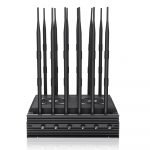How Can You Tell If There is a Cell Phone Jammer?
How can you tell if there is a mobile phone jammer? You can look at your signal bars on your phone. If you enter the range of a jammer, the bars would drop dramatically. If you’ve spotted a signal drop, then the jammer is in the area. In most countries, cell phone jammers are legal, but there are still ways to detect them.
Locations where cell phone jammers are needed
Cell phone jamming devices are not only needed in public areas, but also in private places such as theaters, schools, and cars. Even otherwise silent train rides can become noisy when cell phones are used. The technology is now available to help these locations keep quiet and free from disruptions caused by cell phone talk. In addition to preventing nuisance calls, cell phone jammers can protect people in these places from criminals and others who are trying to make out on the calls.
The main goal of a cell phone jammer is to prevent other people from using their cell phone. It works by intentionally disrupting the signal flow between a cell phone and the base station. It disrupts all the signals in an area and interferes with legitimate mobile phone service. In addition to preventing privacy, cell phone jammers can also block emergency services. While they may sound complicated, the process is actually quite simple. Jammers use a signal that resembles the frequency of the cell phone signals to jam the signal. This signal is broadcasted out to the entire world. The result is that no cell phone signals can reach a jammer in that location.
Ways to detect a cell phone jammer
How to detect a cell phone jammer? If you are experiencing constant and intermittent signal interruption from an unknown device, it may be time to call your carrier to report the issue. Jammers may be high-tech devices or low-tech devices, but both work by blocking specific frequencies. To detect a jammer, you can use the application shown below. This way, you will know whether you are being harmed by a cell phone jammer.
First of all, check the law. Different locations and states have different laws regarding cell phone jammers. Some of them have strict laws that forbid their use, while others allow them in certain locations. If you suspect someone of using a cell phone jammer, contact the law enforcement. If caught, the police can seize the device. This will help you to identify the person and stop them from harming others.
Legality of cell phone jammers in most countries
There are several reasons to use a cell phone jammer. The devices are harmful to the telecommunication network, disrupting 911 calls and air-traffic control. Some countries have banned these devices entirely. Israel and South Africa have passed laws banning their use. Other countries may be considering the legality of jammers. In any case, it is important to do your own research to decide if a jammer is right for your needs.
Currently, it is illegal to use a cell phone jammer on your own premises, however, local law enforcement agencies are allowed to use them under strict authorization from Federal law enforcement. However, if you are caught using a cell phone jammer, you will be fined a substantial sum. One Florida man was hit with a massive fine after he was caught using a jammer on public transportation.
Dangers of cell phone jammers
Despite the fact that using cell phone jammers is illegal, the Federal Communications Commission (FCC) has stepped in to investigate the dangers of cellphone jammers. The agency has prosecuted a handful of American companies for selling jammers, and is actively looking for users. Last year, investigators from Verizon Wireless and the F.C.C. visited an upscale restaurant in Maryland. The owner had installed a jammer that blocked incoming calls, and complained that employees were glued to their cell phones.
Human hearing has been shown to be impaired by short-term exposure to radiofrequency radiation from a common mobile jammer. In fact, the researchers found that the hearing quality of students exposed to the jammer was significantly lower than those in the control group. In particular, the effect was seen at frequencies of 1000 and 2000 Hz. The study concluded that this type of device poses a significant risk for human hearing. The results of this study should spur countries to pass legislation that restricts the use of signal-blocking devices.








